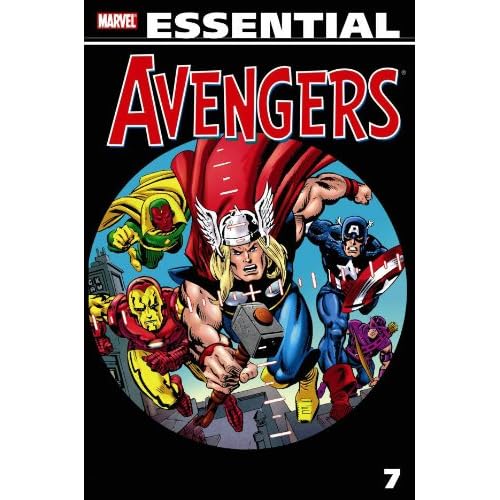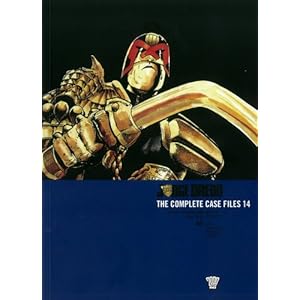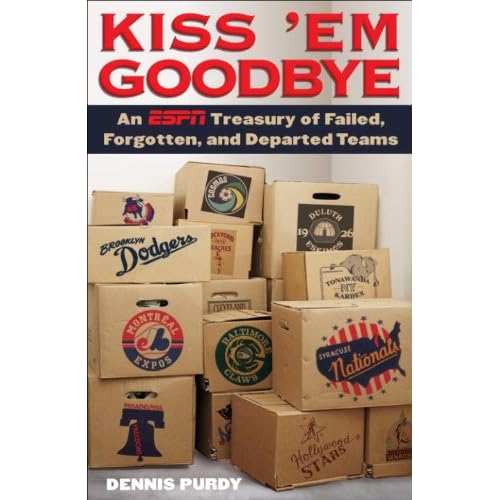What I try to do with reviews at this Bookshelf blog is keep it simple and spoiler-free, and let you know whether I'd recommend you pick up a copy of what I just read. Seems to work okay. This time, a brief review of
Essential Avengers Volume 7 (Marvel, 2010)

It took me six months, and I'm not saying I deserve a medal or anything, but I just finished reading (or rereading) every
Avengers comic that Marvel published in its first eighteen or so years. It's a little difficult to say exactly when; Marvel doesn't include any proper publication information in the pages of their
Essential series. Even when they decided to be complete dicks and redesign their books in a nose-thumbing at geeks like me who like to have matching spines on our bookshelves, they didn't take that opportunity to give their books page numbers, much less anything helpful in the table of contents. It really doesn't make all of those breathless Roy Thomas annotations like "*See the current ish of Cap's own mag!" any easier to understand.
I've learned a few things from this reread. Among them: The Avengers chews up and spits out writing talent. Everybody who started on the title came to it with enthusiasm and clever ideas, but it took about twenty issues for the shine to dull. Stan Lee, Roy Thomas and Steve Englehart each had almost two years of really fun stories in them, but by the time each writer petered out, you can feel the words dying on the page. Lee's last ten or eleven stories, which lead Volume 2, are arguably among the worst things he wrote for Marvel, but they're the highest of art compared to what Thomas, who started really well and probably better than Lee, turned into by the end.
I've written in previous reviews how, one by one, all those legendary mammoth Avengers storylines were revealed to be little more than B-movie trash, but "The Kree-Skrull War" really took the cake the second time around. That's the one where, instead of focusing the melodrama on the Mighty Thor flying through space and smashing the bejezus out of an alien battlefleet, Thomas built the climax around Rick Jones, the teen sidekick character who never got the memo to just go the fuck away, locked in a closet with a talking turnip remembering a bunch of old funnybooks from the 1940s. It's the worst thing ever, at least until Englehart's "Celestial Madonna" story, every page of which screams to the heavens with a misbegotten insistence of self-importance as Mantis, raised from birth to be Little Miss Perfect, use the phrase "this one" instead of "I," and, well, marry a tree, ascends to a higher plane of consciousness. If you ever thought this saga was ever worth reading, it's because you read it when you were twelve. And wrong.
On the other hand, there's some far better art to be found here than people think. Don Heck doesn't get a lot of praise, but his mid-sixties work is beautiful, just effortlessly contemporary. There are so many artists in the biz who never update their fashion references, and so Heck's zippy LBJ-era suits, cocktail dresses and cigarettes, emphasizing the now so casually, just shine with period cool. Admittedly, a lot of the work that came after him was simple Sal Buscema journeyman stuff, but Neal Adams' hyperdramatic posing and agonized faces in Volume 5 even make "The Kree-Skrull War" worth looking at.
But George Perez... now, there's a guy who has a deserved reputation for drawing terrible books, but man, could he ever draw them well. Volume 7 includes some of his early professional work and it's so terrific that I got actively aggravated whenever he missed a deadline and some inventory story or fill-in artist showed up. In this volume, Englehart finally winds up his increasingly tedious tenure with another big, overrated epic called "The Serpent Crown," in which, for reasons I never understood, the former teen comedy star Patsy Walker insists that Hank McCoy, the Beast, make her into a superhero and she gets a supersuit that lets her become "the happy-go-lucky Hellcat!" I
guess that's a good thing; I adored another Marvel team book,
The Defenders, in which she starred, when I was a kid, and those rereads don't depress me nearly as much as these do.
Well, at least the art in "The Serpent Crown" is nice, but the story, in which the Avengers are trapped on a parallel Earth - a cute, in-jokey version of DC Comics' Earth, with stand-ins for their Justice League - in which... well, a
crown with
serpents on it mind-controls everybody to... well, I never figured out what was going on. Replace "serpent crown" with "antelope codpiece" and you've got the same story, basically.
Gerry Conway and Jim Shooter take over script duties from there and things improve massively, although not really to the point that I was ready to tell everybody I knew about these great funnybooks I was reading. There's a four-part crossover with the dementedly, lovably silly
Super-Villain Team-Up in which the team gets caught in the middle of a war between Dr. Doom and the Atlantean archvillain Attuma, and Ultron shows up again, and the Grim Reaper, a deeply silly bad guy who can honestly take credit for being one of the few genuinely, believably insane characters Marvel came up with, shows up again, because his brother Wonder Man got brought back from the dead, but his brain patterns had already been used by Ultron to program the android superhero the Vision and Grim Reaper has a complaint with that... I swear it makes more sense when you read it.
It is nice on those occasions where the writers stopped feeling obliged to pay lip service to the comic's mountain of continuity. It's hard to create lasting escapist entertainment when you can't even escape from the stories that preceded you! Creating new characters and villains, like a really odd guy called Graviton who's the director of a scientific think tank and notably older than the rest of the cape-clad cast, made for much more fun stories than the backward-looking ones. Having said that, George Perez could draw
almost any superhero comic and I'd be willing to give it a look. As for Essential Avengers, volume one is probably worth it for the early Stan Lee / Jack Kirby / Don Heck material, and volume three for Roy Thomas's best work, and volume seven for George Perez, but "essential" really is pushing it, to be honest.











